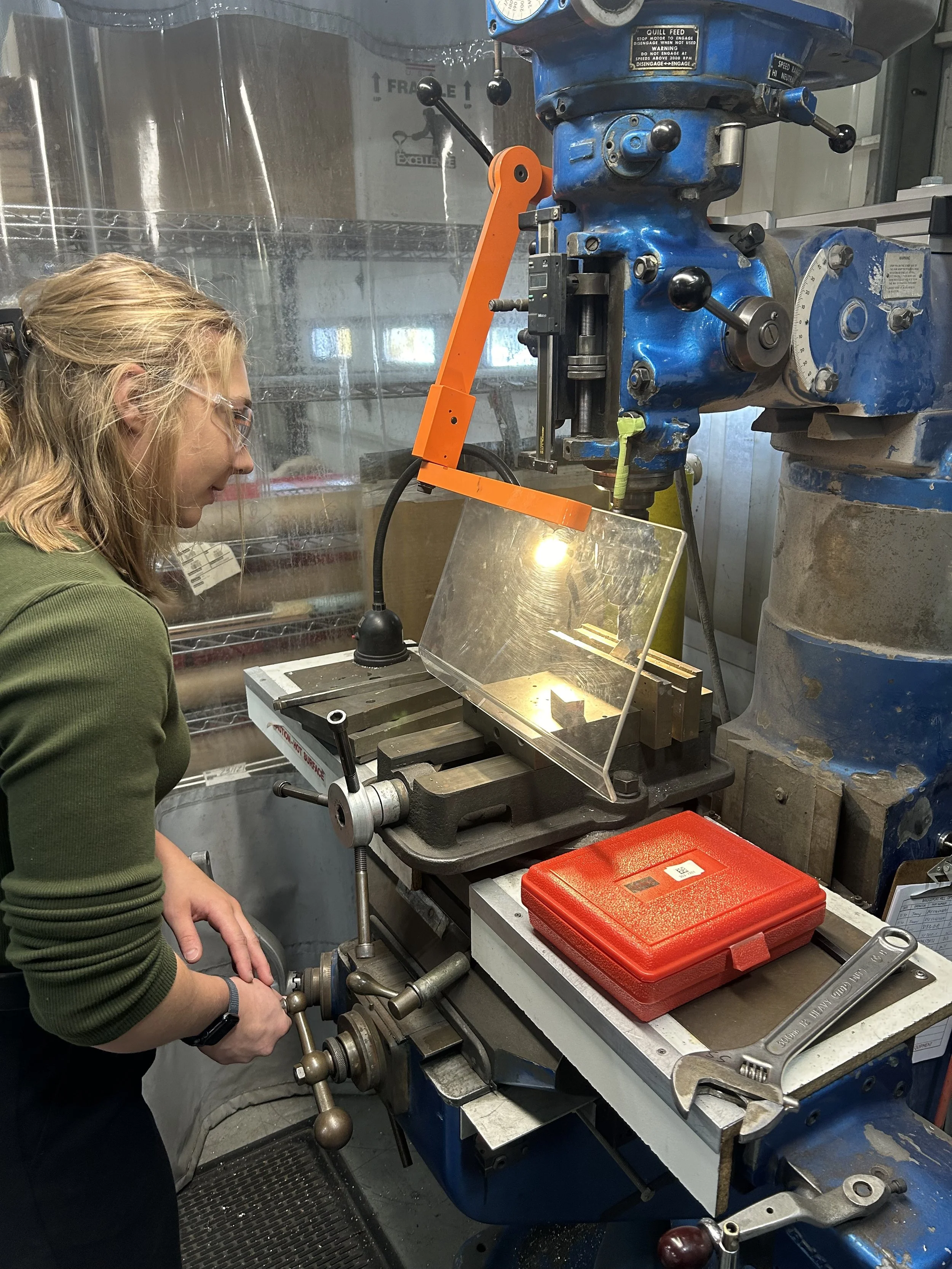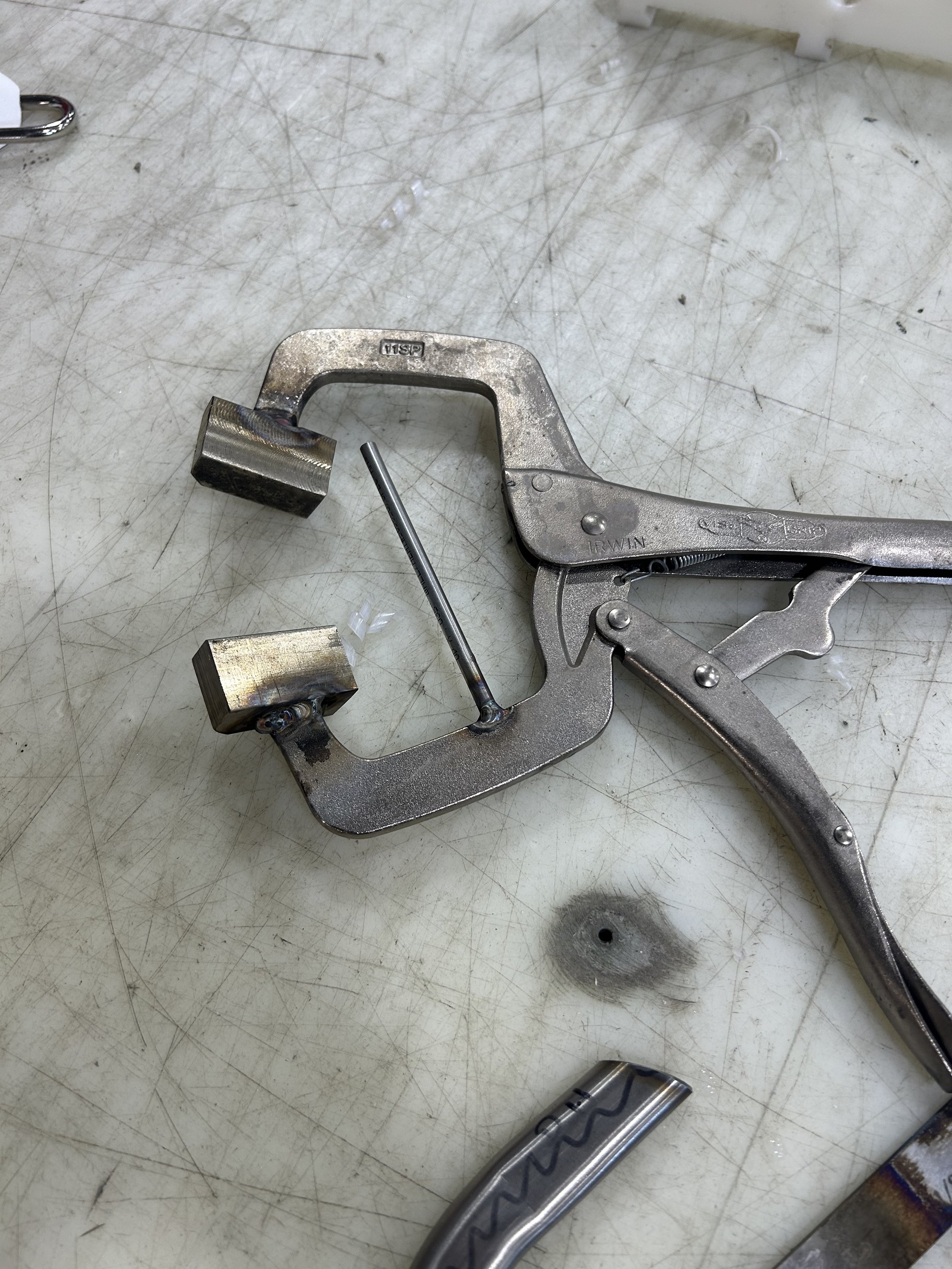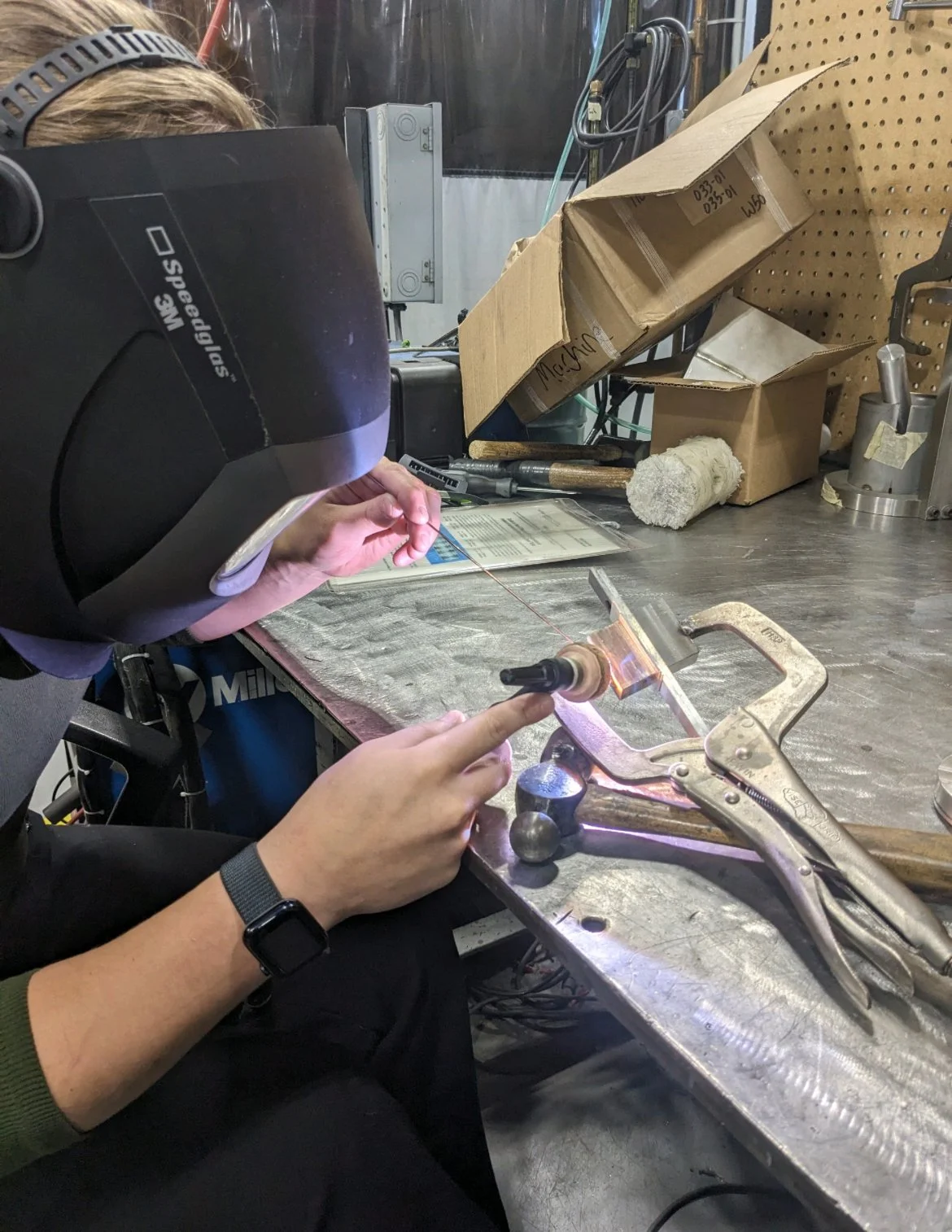Drain Mast Forming Clamp
Objective:
The incoming tubes were missing a required flattened section, making them unusable as-received and preventing assembly.
Solution:
Create a fixture that enables associates to consistently and accurately flatten the designated portion of the tube in-house.
Tools/Skills Used:
Welding(Steel), Manual Mill, Horizontal Bandsaw
Approach:
Repurposed clamps, pipe segments, and available steel stock to build a custom forming fixture that locates the tube and controls the flattening depth and alignment.
My Role:
Cut, milled, and welded all fixture components and ensured the assembly was strong, aligned, and easy to operate.
Results/Impact:
Produced a functional, repeatable fixture that allowed associates to complete the flattening step accurately and efficiently, eliminating delays and preventing scrap.
This clamp was one of the first projects I ever got to work on that fully presented me with a real-time problem that needed to be solved quickly. During my internship at NMG Aerospace, I was approached with the problem that the drain tubes we had received for the assembly of drain masts were sent to us incorrectly manufactured. Drain masts are responsible for proper draining and flow of various kinds of liquids in an aircraft. As is any other part in an airplane, it was critical that this part met the drawing specifications after we assembled it and sent it out.
We didn’t have time to return the tubes and order new ones from our sellers; we had to improvise with what we had. This was where my brain storming and team work skills kicked in.
After the parts were machined to proper size, they were taken to be welded(photo is my first time welding!). I used metal slots we also found to act as the pipe, so we could clamp down on the part to avoid warping when welding. We welded on the two blocks, and then the pipe. Once we attached these, it was time to start testing.
The first test was a little bit too successful. It certainly flattened the part, but it ended up being a little too much. This was when I learned just how strongly metal wants to warp when being welded; you need a huge amount of force to hold the two parts you are welding together in place properly.
This was a simple fix, thankfully. All it took was taking the now welded together clamp back to the mill and re-milling out the part that needed it. The second test proved to be much better, with the clamp and blocks hitting the proper flatness and width it needed while the tube stopped the clamp from flattening any further.
In the end, this fixture ended up saving thousands of dollars in both if they were to send the bad material back to get new ones, and dozens of hours of lost company time waiting for the parts to come in.
My initial idea for the design was a fixture that was to be attached onto the arbor press, where it would clamp onto the drain mast, and the arbor press would press down on the part. However, this would require us to make two parts for the arbor press, which would have taken a lot of time and effort, neither of which were on our side. I worked on this project with a manufacturing engineer on the floor, and he suggested that instead of doing all that work, that we instead use a clamp and weld something onto it. Considering this had to get done quickly, I agreed, and we got started.
We got the clamp needed, and then found a steel block and a pipe. The steel was milled down to be able to get the correct dimension of the flat part of the tube, and the tube was put there as a physical stop so the associates wouldn’t accidentally over flatten the part.
I look back on this project very fondly. While it seems like a relatively simple project now, I believe this is one of the first times I got to use critical thinking to solve a problem. I learned skills I never had known before, and I realized that not all problems are multiple-day projects that involve difficult schematics to come up with a some complex fixture.
I’ve found that the answer is often already there; you just have to look at it differently. Good engineering isn’t always about new tools or complex designs, but about making the most of what’s already in your hands.




